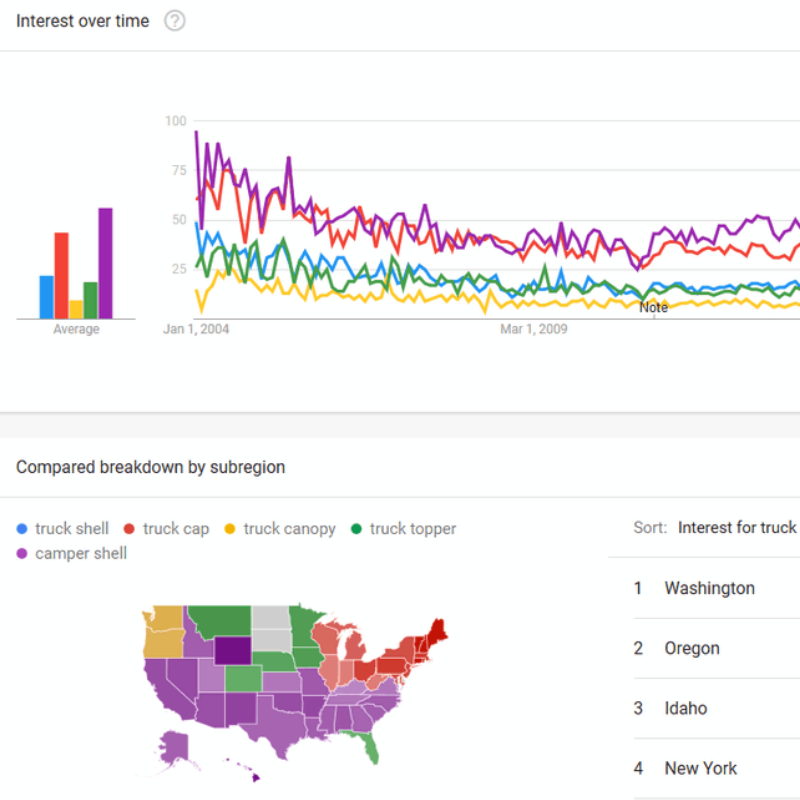

Say you get tired of pressing the "Enter" key after every keyword and you want to enter all of them in one line. If you run the code now, a graph should appear on your screen. Finally, we use plt.show() to see our plot.

We then use a loop (based on the number of keywords in our kw_list) to change every line style from a dotted line to a straight line on the plot and legend.
#GOOGLE TRENDS GRAPH INSTALL#
Since seaborn is built on top of Matplotlib, it will install the other required dependencies for us ( numpy, scipy, pandas and matplotlib). We'll begin by installing the modules we need. Some experience with Python and data visualizations will be helpful when you tackle this tutorial, but not essential. We'll visualize the data using seaborn, a Matplotlib-based library. We'll get our data using PyTrends, an unofficial Google Trends API.
#GOOGLE TRENDS GRAPH HOW TO#
In this article we'll show you how to generate good-looking graphs with Google Trends. The opinionated guide to setting up a Sourcegraph server for advanced code searchīitcoin vs. P圜harm vs Spyder vs Jupyter vs Visual Studio vs Anaconda vs IntelliJ OpenGrok vs Sourcegraph vs GitHub vs FishEye vs Source Insight vs Elasticsearch Learning Piano vs Learning Guitar vs Learning Keyboard vs Learning Violin vs Learning Cello Kubernetes vs Docker vs OpenShift vs ECS vs Jenkins vs Terraform Heroku vs Netfliy vs Vercel vs GitHub Pages vs Firebase vs Vercel **Clubhouse summaries**: and discuss deadlinesĬreating Custom Graphs with Google Trends and pandas Better Google Trends graphs using Python and seaborn


 0 kommentar(er)
0 kommentar(er)
